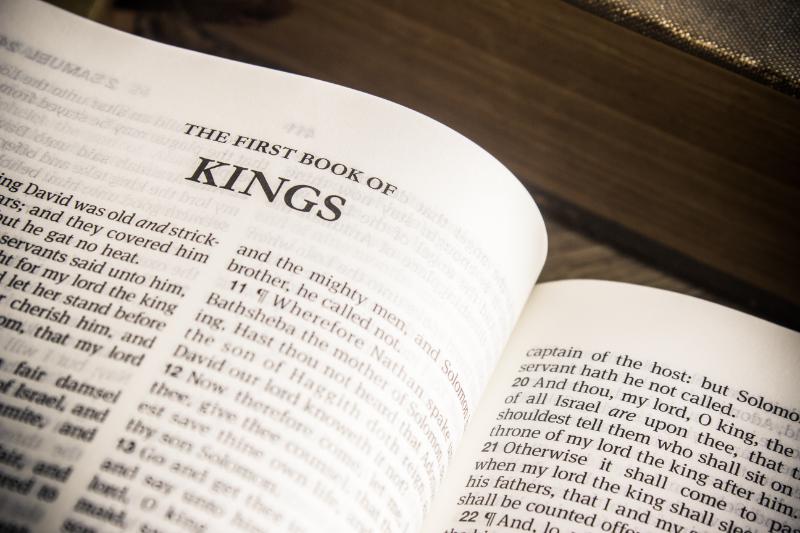Bible study doesn’t usually lead to apostasy. But Mark 2:23-28 has a bad track record.
Just ask Bart Ehrman, the New Testament scholar whose journey toward athiesm began with wrestling over Mark 2:26.
Or ask the Pharisees who wrestled with Jesus in Mark 2:26.
Sometimes the bigger the mind, the larger the error. Especially when that mind is more eager to analyze Scripture than it is to understand Christ.
But before I come down too hard on Ehrman and the Pharisees, I have to admit that in scores of readings across decades of study, I have also been guilty of seeing the doctrine in this chapter and completely missing Christ. I’ve seen lessons about Sabbath-keeping. I’ve even seem some impressive verbal judo that establishes Jesus as a master of remonstrance. But although both of these things are true, Marks’ purpose in writing his gospel is not primarily to correct doctrine or to showcase Jesus’ command of rhetoric. It’s to demonstrate that Jesus is the Son of God and to show how this is good news for sinners. This vignette is no exception to his narrative purpose.
Marks’ purpose in writing his gospel is not primarily to correct doctrine or to showcase Jesus’ command of rhetoric. It’s to demonstrate that Jesus is the Son of God and to show how this is good news for sinners.
A Story Within A Story Within A Story
To interpret this passage correctly, we need to remember that it is a story within a story. And all of Mark’s individual vignettes are intentionally chosen and sequenced (by man and Holy Spirit) to serve a narrative goal. Without this vital context, we might easily miss what Mark is trying to say.
In the preceding sections, Mark has already shown how Christ demonstrates authority over the men he called to be his apostles (1:16-20). He also illustrated Christ’s authority over demons (1:16-20), over sickness (1:29-34), over leprosy (a common symbol of sin) (1:40-45), and over sin itself in forgiving the paralytic (2:1-12), calling Levi the tax collector (2:13-14), and eating with the “sinners” (2:15-17). In the section immediately preceding this passage (2:18-22), Mark begins to expand his scope into the ways Jesus begins to allude to his kingship and a pivotal change in covenant through various allegories (“the Bridegroom,” “new wine,” “new cloth”).
Taken in this context, it is reasonable to assume that Mark’s purpose for including this story is to continue expanding on his multi-layered theme of Jesus’ authority. What we learn about Sabbath-keeping, although important, is secondary. Mark’s primary purpose is to show us something about Jesus.
The Hearing in the Hay

The scene opens like a courtroom drama. Jesus’ disciples are caught picking grain on a Sabbath and immediately, in prosecutor-like fashion, the Pharisees issue a cleverly-worded question to their Rabbi – “Why are they doing what is not lawful on the Sabbath?” (v24, emphasis mine). Shamelessly, they lead the witness. No matter how Jesus answers the question it will be an admission that his disciples have broken the Sabbath law. So Jesus chooses not to answer the question.
Instead, he moves from the role of witness on the interrogation stand to defense attorney in the courtroom and fires back at them with their own ammunition. Their claim of illegality rests not on the letter of the law, but on legal precedent, per their rabbis through the centuries. So Jesus challenges their claim with an older precedent established by a greater religious leader – Ahimelech (accompanied by Abiathar, who would become high priest during David’s day. More on this later).
The counterargument was this:
- We know from 1 Sam. 21:1-9 that the High Priest, as the mediator between God and man has the authority to interpret the Law, including any exceptions to its ceremonial regulations. He can do this because he speaks for God.
- The high priest allowed a certain group of people to eat what was unlawful (and on a Sabbath), in one unique case.
- That case was when David – God’s anointed, but yet uncrowned king – desperately needed sustenance to further God’s mission of ushering in a new kingdom.
- God approved of this decision as evidenced by his blessing on David and Abiathar (who alone of his family escaped death by Saul and became the next High Priest).
How could this bizarre scenario possibly apply to Jesus and his disciples? Only by the two situations being analogous enough that the Old Testament story could provide sufficient legal precedent to establish the legality of his disciples’ actions.
Here, Jesus is proclaiming by analogy that He is also an anointed king, unrecognized by the establishment of the day, but needing sustenance for his men in order to further God’s mission of ushering in a new kingdom.
He is also declaring himself to be high priest, in that he had the authority to interpret the Law of the Sabbath, and to issue an exception to its ceremonial regulations and distribute the forbidden bread to his men.
And just in case this analogy was lost on them, he issues a blatant proclamation about how the Sabbath law was to be interpreted – as something to benefit mankind, not enslave him. He then immediately moves on from speaking about the Sabbath to speaking about himself.
“So the Son of Man is lord even of the Sabbath.” (Mk 2:28)
Jesus’ closing statement is succinct and indisputable. He is the Son of Man – Daniel’s coming Messiah-King (Dan 7:13-14) – and he is the Lord of the Sabbath, in the role of the high priest.
Did Jesus Misquote?

Jesus’ radical claim was enough to make deadly enemies of the Pharisees. But it is Mark 2:26 that most scholars struggle with. In this verse, Mark records the following quote from Jesus:
“how he entered the house of God, in the time of Abiathar the high priest . . .” (Mk 2:26)
Abiathar is named here. However the actual high priest at the time of the incident was his father, Ahimelech. Liberal scholars, such as Bart Ehrman, take this verse as direct evidence that the Bible is not divinely inspired, but rather contains obvious errors that point to its human origins.
More conservative scholars point out, however, that the Greek “epi” (ἐπί), translated “in the time of” does not necessarily have to mean “at the exact moment that Abiathar was high priest.” Rather, in the same way Christ used the word in Mark 12:26 to identify a general segment of Scripture (in a time before chapters and verses existed), epi can be used more generically. “High priest” is also a term applied loosely in the Old Testament, as evidenced by Luke 3:2, where both Annas and Caiaphas were both called “high priest” even though Annas had retired from the office in favor of his son-in-law almost 14 years earlier. The plural term “high priests” is also used frequently throughout the gospels, even though technically only one man at a time held the formal office.
So Jesus’ reference to Abiathar is not a clear error. But it is still a curiosity. Why reference Abiathar when Ahimelech would have been clearer and less controversial. If we first accept Christ as omniscient God, the answer must be that in the context of his argument, Ahimelech would not have been the clearer and less controversial choice.
Why Abiathar?
We may never know for certain why Jesus chose to focus on Abiathar instead of Ahimelech. However, Abiathar does support his argument better in several key ways:
- Abiathar survived
Ahimelech and all his family were almost immediately killed by Saul. But Abiathar, whom we can conclude was serving there with his family at the time of David’s visit, escaped death and went on to become one of the most notable high priests in Israel’s history. The fact that David and Abiathar were blessed by God and given anointed positions better illustrates the fact that God was in agreement with the unorthodox interpretation of the normal law. - Abiathar was a more prominent high priest
Just as the authority of a character witness carries weight in a trial, Jesus, as a master lawyer called upon the weightier of the two men, since Abiathar was presumably present with his father and allowed the transaction to take place. - Abiathar was ultimately a picture of a failed priesthood
It may be, given that his audience was made up of religious elite, that Jesus mentioned Abiathar for the added weight of his subtext. Although Abiathar started well, he was also the only priest in Israel’s history to be deposed. Solomon removed him from his post after he rebelled against God’s anointed king and supported Adonijah in his attempt to seize the throne. 1 Kings 2:27 interprets this as God’s fulfillment of his curse on the line of Eli due to a longstanding pattern of rebellion. The pharisees were about to fall to the same fate.
Seeing Jesus

The pharisees religiously studied the law – but they completely missed their Messiah.
Bart Ehrman passionately studied the New Testament – but he completely missed the truth about Christ
Jews and Christians alike have fastidiously honored the Sabbath throughout the centuries – and yet completely missed its point because they missed the Lord of the Sabbath.
What do we do with this country courtroom scene? We look at Jesus. His authority defines all other laws. His character is above all social norms. We will never understand Him by gazing at the letter of the law. We can only understand the letter of the law better as we gaze at him.
As we behold, so we become. Gaze intently at the Lord of the Sabbath.
For Further Reference:
“Revisiting “the Time of Abiathar the High Priest”: Interpretation, Methodology and Ways Forward for Understanding Mark 2:26”. Themelios. Vol 47, Issue 2. https://www.thegospelcoalition.org/themelios/article/revisiting-the-time-of-abiathar-the-high-priest
